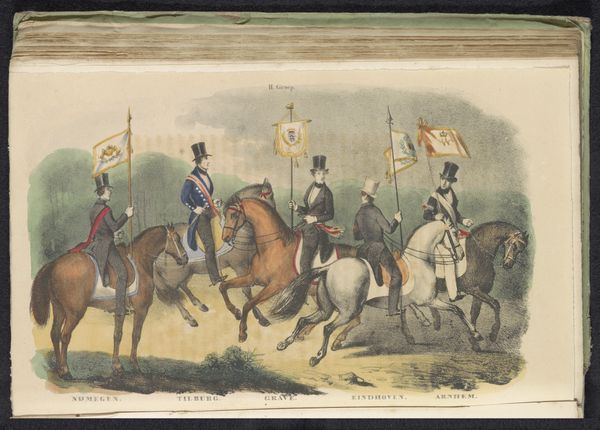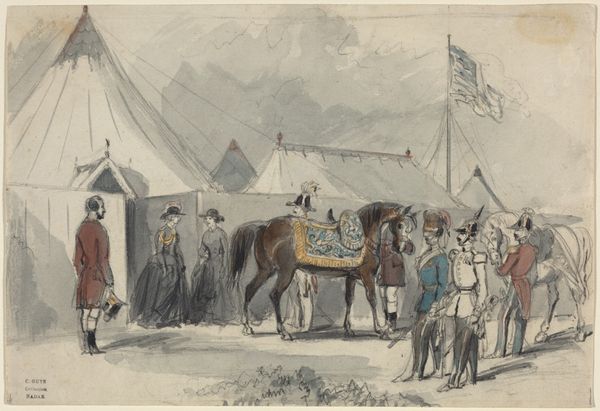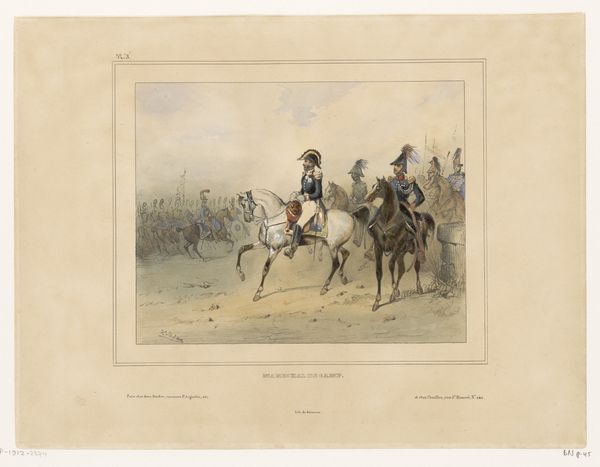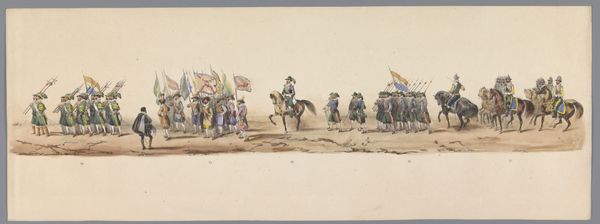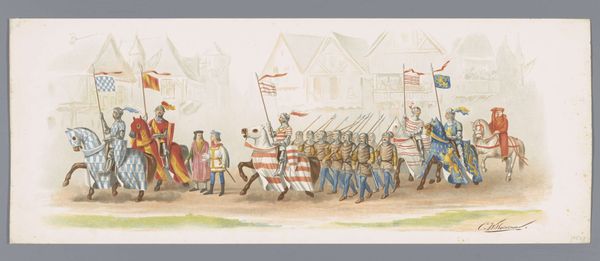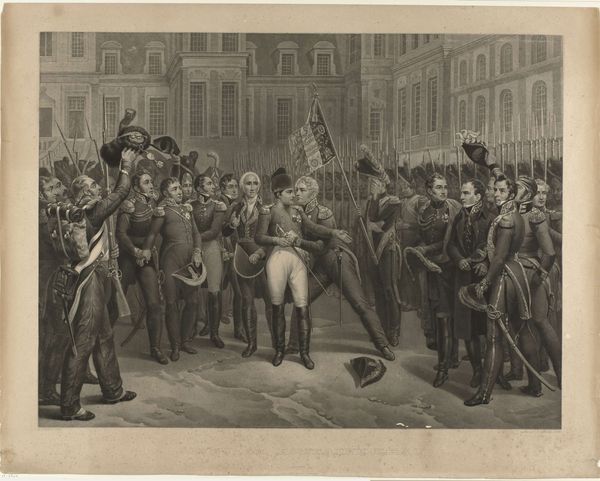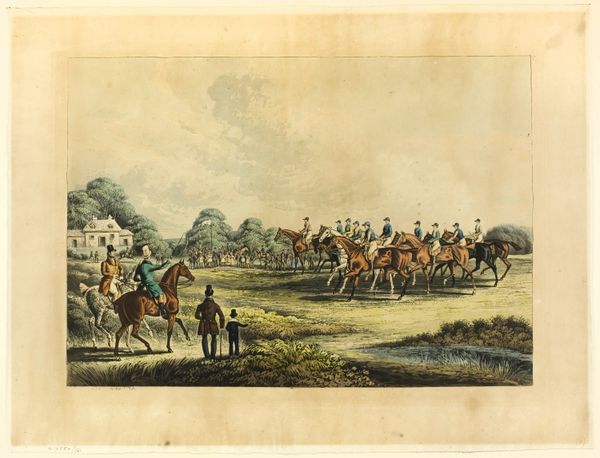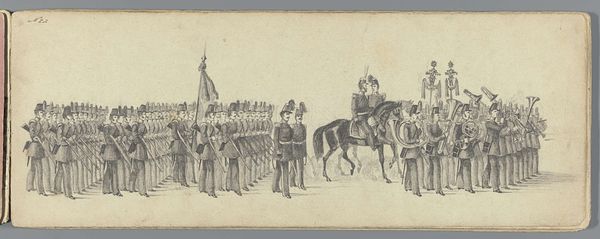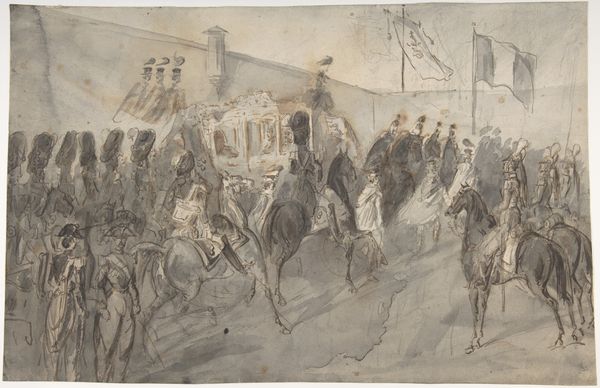
Die Führer des Pfalz-Badischen Aufstandes 1849 Boening, Goegg, Blencker und Frau, Metternich und andere in Rastatt
0:00
0:00
drawing, mixed-media, watercolor
#
portrait
#
drawing
#
mixed-media
#
16_19th-century
#
figuration
#
watercolor
#
romanticism
#
history-painting
#
mixed media
#
watercolor
Copyright: Public Domain
Friedrich Kaiser made this watercolor image of the leaders of the Palatinate-Baden Uprising of 1849 in Rastatt. The image commemorates a key moment in the German revolutions of 1848-49. By visually linking the leaders of the uprising, such as Boening, Goegg, and Blencker, Kaiser’s image underscores the political and social turmoil that swept through the German states. The presence of women and Metternich is a cultural reference and suggests the broad involvement of different social groups in these revolutionary movements. Made in Germany, this artwork reflects the burgeoning sense of nationalism and the desire for democratic reforms that characterized the era. Analyzing Kaiser's watercolor through historical sources like newspapers, pamphlets, and personal letters, we gain insight into the aspirations of the revolutionaries and the power structures they sought to challenge. Understanding the social and institutional context is essential to grasp the role of art as a reflection of its time.
Comments
No comments
Be the first to comment and join the conversation on the ultimate creative platform.
